Adinopsis
James S. Ashe (1947-2005) and Stylianos Chatzimanolis- Adinopsis flavicornis
- Adinopsis devroeyi
- Adinopsis africana
- Adinopsis schoutedeni
- Adinopsis rufobrunnea
- Adinopsis cinnamomea
- Adinopsis australis
- Adinopsis bicornis
- Adinopsis myllaenoides
- Adinopsis angusta
- Adinopsis ferruginea
- Adinopsis braziliensis
- Adinopsis ndumu
- Adinopsis mmabolela
- Adinopsis maraisi
- Adinopsis hammondi
- Adinopsis deckerti
- Adinopsis cuspidata
- Adinopsis nepalensis
- Adinopsis groehni

Introduction
The genus Adinopsis is comprised of small (1.6-3.7 millimeters in length), teardrop-shaped species that are inhabitants of detritus and mud at the margins of ponds and streams (Klimaszewski 1979, Klimaszewski and Jansen 1994).
Characteristics
Adults of Adinopsis can be distinguished from other Deinopsini by the combination of: 2-2-2 tarsal segmentation; 2 large subapical teeth on mandible; 4-segmented maxillary palpi with segments I and III vestigial; antennae 11-segmented with the two basal segments enlarged and the apical segment with an apical papilla; tergum X narrowly elongate; and apical lobe of paramerite with 2 long and 2 short setae (from Klimaszewski and Jansen 1994). Uhlig and Klimaszewski (1995) provided a key for identification of the species from Africa, and Klimaszewski (1979, 1982) provided a key for identification of most Neotropical, Nearctic, Australian and Oriental species.
Distribution
The genus Adinopsis is known from the following faunal regions: Afrotropical [A. hammondi Klimaszewski, A. ndumu Klimaszewski, A. mmabolela Klimaszewski and Jansen, A. flavicornis Klimaszewski, A. africana Cameron, A. schoutedeni (Bernhauer), A. devroyi (Bernhauer)], Oriental [A. rufobrunnea Cameron, A. cinnamomea (Kraatz), A. nepalensis Pace], Australian [A. australis (Fauvel)], Neotropical [A. myllaenoides (Kraatz), A. pubescens Klimaszewski, A. braziliensis Klimaszewski, A. ferruginea (Sharp), A. angusta (Sharp)] and Nearctic (A. myllaenoides (Kraatz), A. bicornis Klimaszewski, A. cuspidata Klimaszewski). Klimaszewski and Jansen (1994) provided a world checklist of species and species groups. Zerche (1999) described a fossil species from Baltic Amber.
Discussion of Phylogenetic Relationships
Nothing is known of the phylogenetic relationships of the species of Adinopsis. Klimaszewski and Jansen (1994) described a new subgenus Condylopennis to include the species A. bicornis and A. cuspidata based on supposed apomorphic characteristics uniquely shared by these two species.
References
Klimaszewski, J. 1979. A revision of the Gymnusini and Deinopsini of the World. Canada Agriculture monograph No. 25. 169 pp.
Klimaszewski, J. 1982. A revision of the Gymnusini and Deinopsini of the world (Coleoptera: Staphylinidae). Supplement 2. Canadian Entomologist 114: 317-335.
Klimaszewski, J. and R. Jansen. 1994. Description of a new Afrotropical species of Adinopsis Cameron 1919 with notes on some Neotropical and/or Nearctic species (Coleoptera Staphylinidae Aleocharinae). Tropical Zoology 7:325-332.
Uhlig, M and J. Klimaszewski. 1995. A review of the African Adinopsis species with description of two new species from Northern Namibia. Mitt. Zool. Mus. Berl. 71: 297-309.
Zerche, L. 1999. Eine neue Art der Gattung Adinopsis Cameron aus dem Baltischen Bernstein. Beitr. Ent. 49(1): 97-105.
Title Illustrations

| Scientific Name | Adinopsis |
|---|---|
| Location | Costa Rica |
| Size | length 2.6 mm |
| Copyright |
© 1997 James S. Ashe (1947-2005)

|
About This Page
Development of this page made possible by National Science Foundation PEET grants DEB 95-21755 and DEB 99-78110 to James S. Ashe.
All images on this page copyright © 1997-2003 James S. Ashe.
James S. Ashe (1947-2005)

University of Kansas, Lawrence, Kansas, USA
Stylianos Chatzimanolis

University of Tennessee at Chattanooga
Page copyright © 1997 James S. Ashe (1947-2005) and Stylianos Chatzimanolis
All Rights Reserved.
- First online 29 August 1997
- Content changed 06 November 2003
Citing this page:
Ashe (1947-2005), James S. and Stylianos Chatzimanolis. 2003. Adinopsis. Version 06 November 2003. http://tolweb.org/Adinopsis/10043/2003.11.06 in The Tree of Life Web Project, http://tolweb.org/





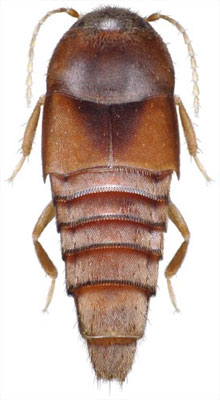
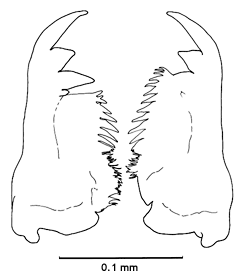
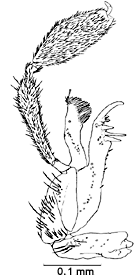
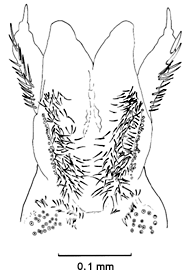
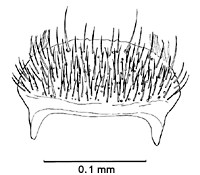
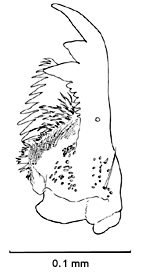
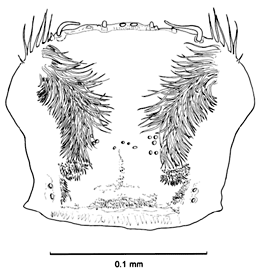
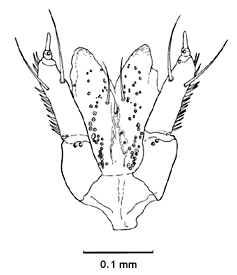



 Go to quick links
Go to quick search
Go to navigation for this section of the ToL site
Go to detailed links for the ToL site
Go to quick links
Go to quick search
Go to navigation for this section of the ToL site
Go to detailed links for the ToL site